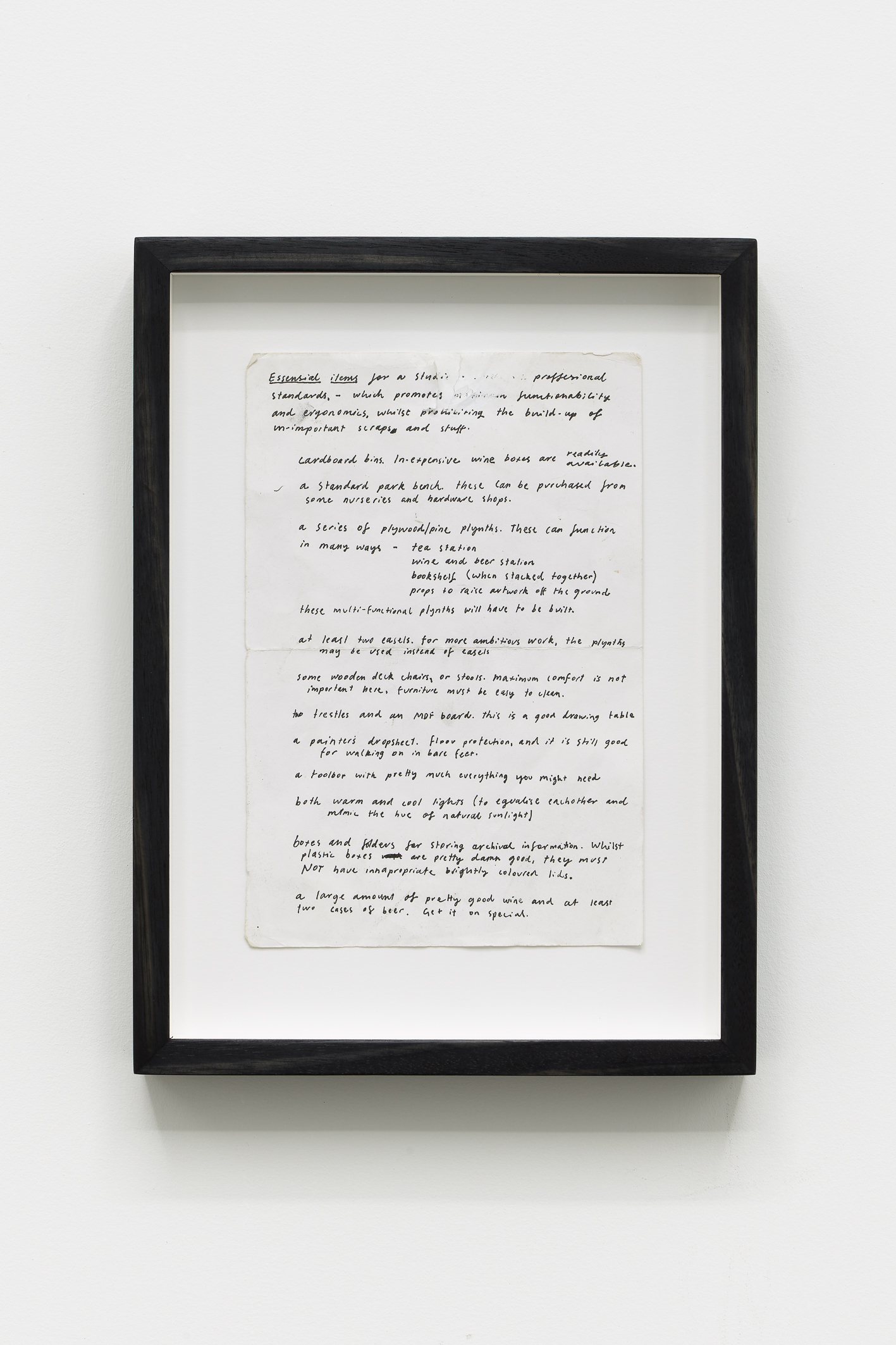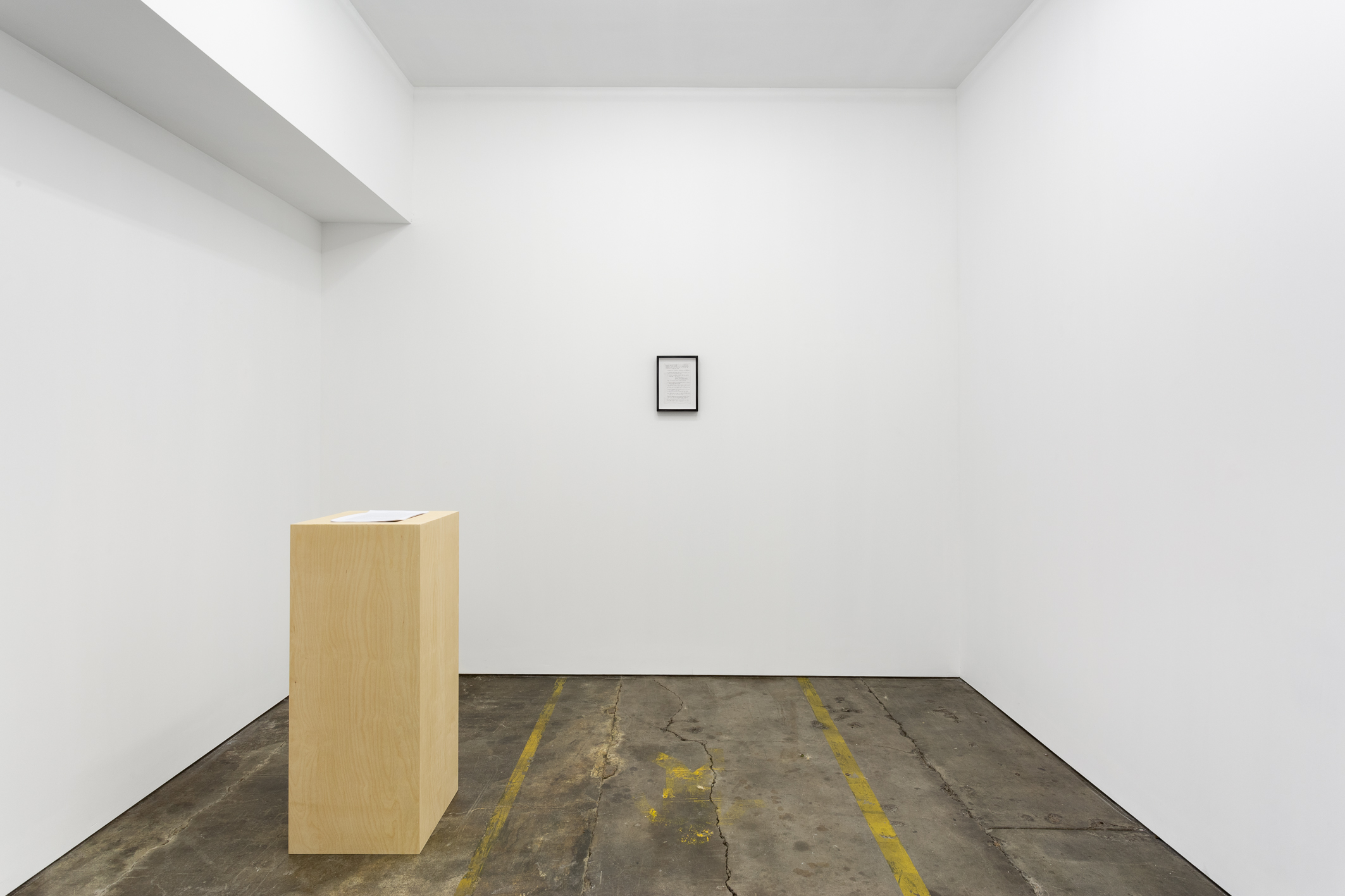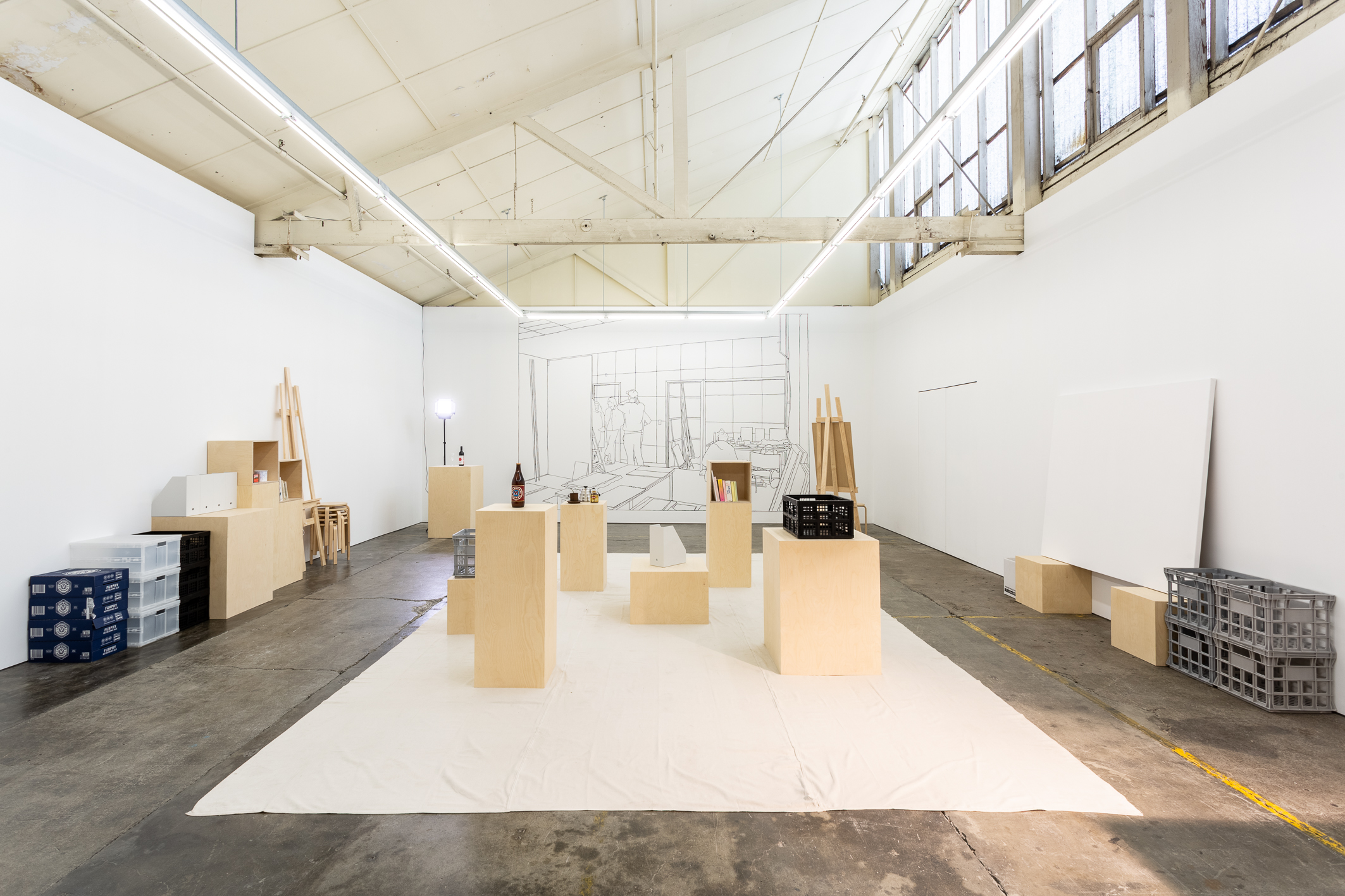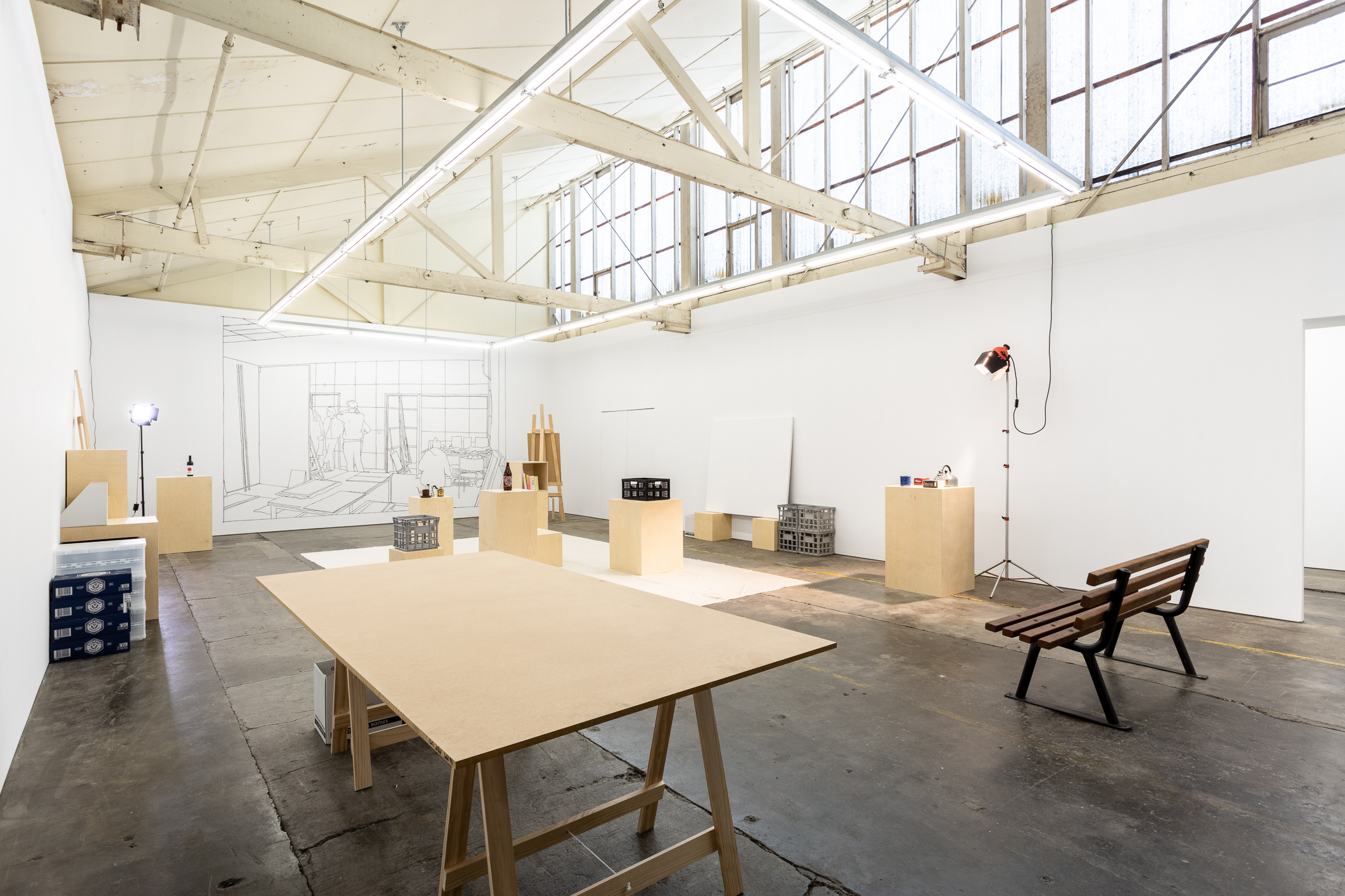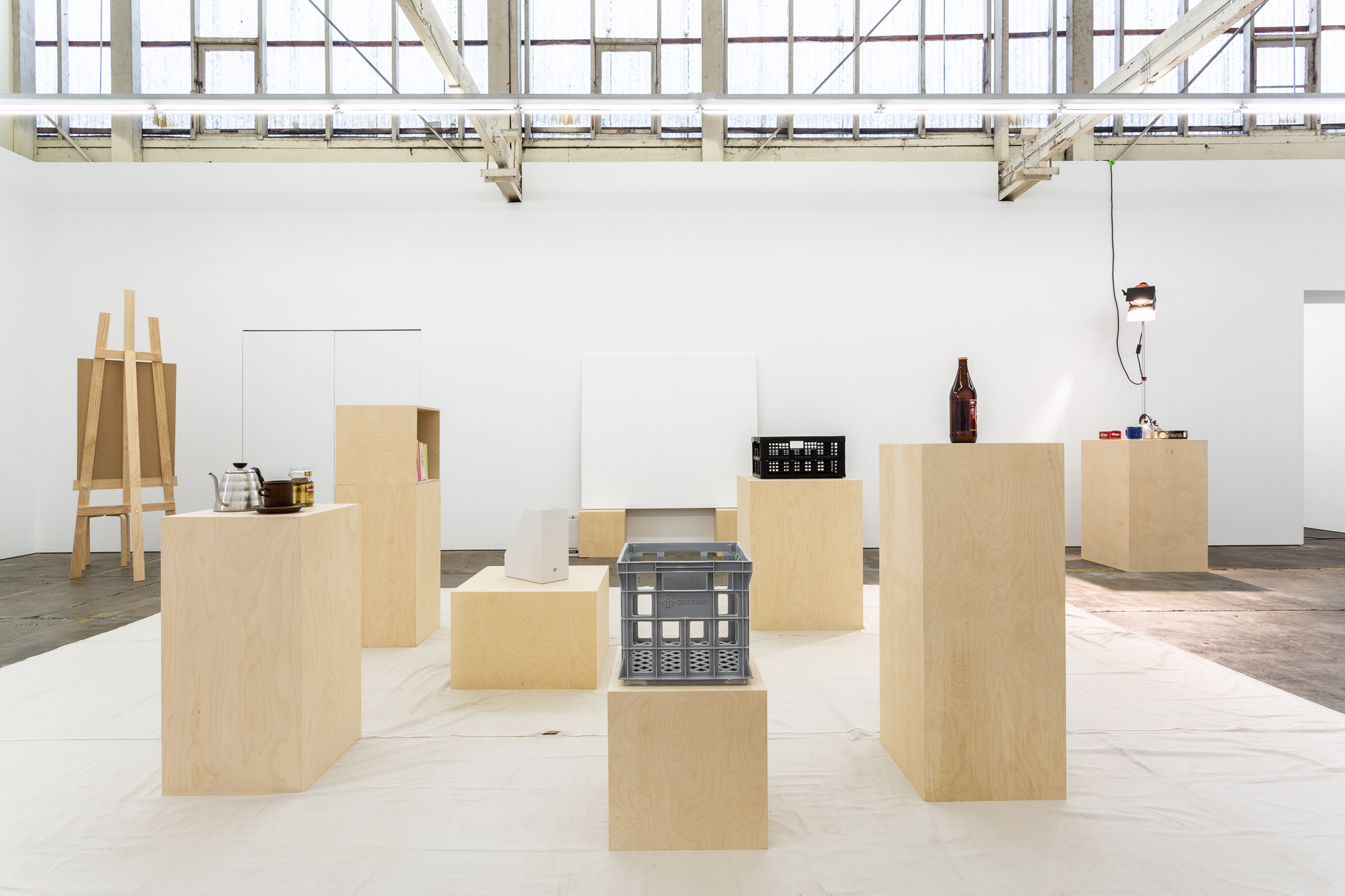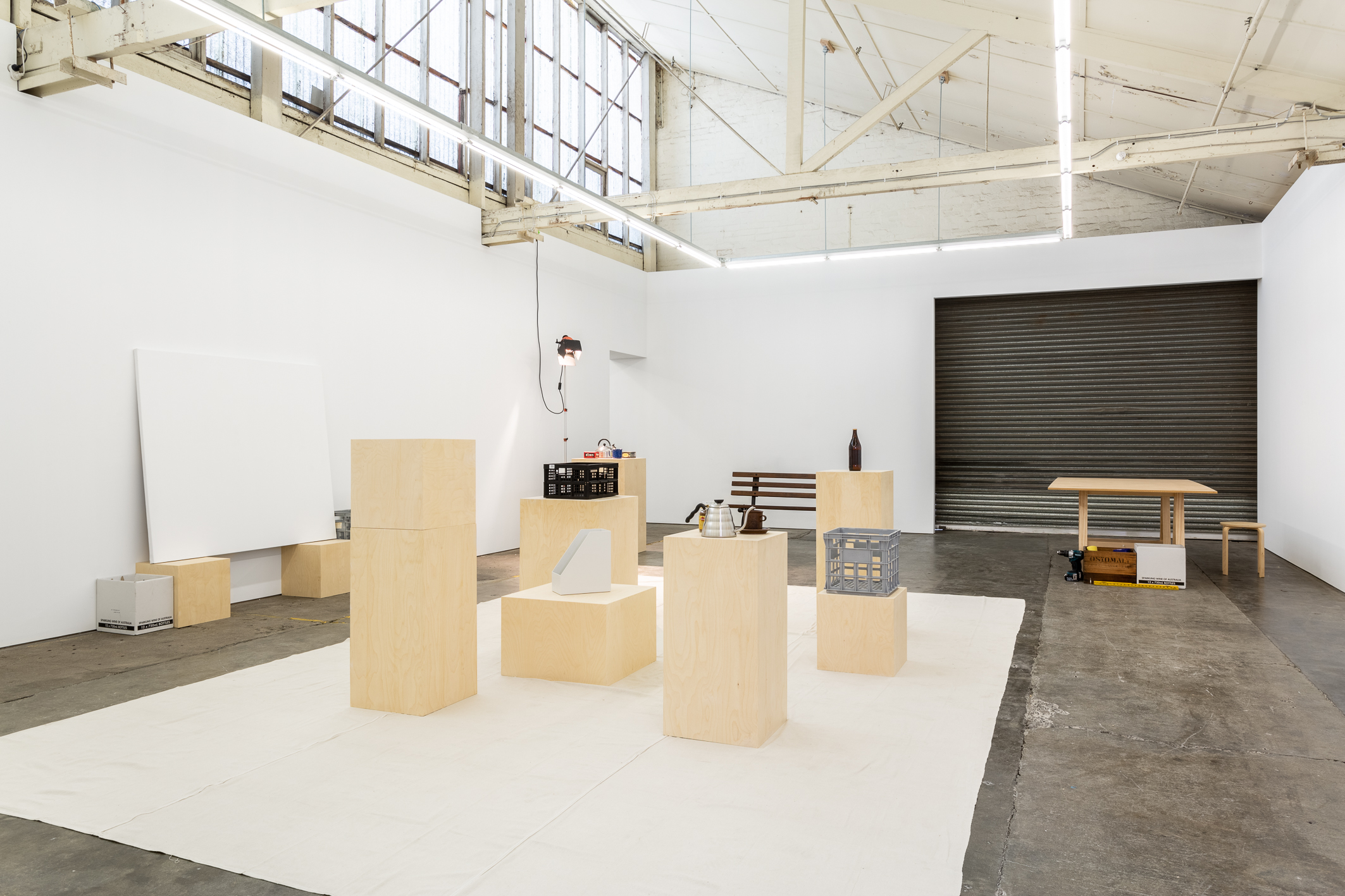Christopher Fairlie
15.02.2019 - 09.03.2019
Silence and generation
An inception point, or angle of inflection, doubt, creating a situation where you ask yourself ‘is everything I see true? Or do I doubt it?’, this is where drawings can contain their most profound and compelling questions. In after thoughts, the idea of the studio is positioned at this point, a place where Chris Fairlie’s drawings all reach a commonality and is the first and only instance where a clear conceptualist strategy has been extended upon, in the form of his notes for a studio in gallery 1.
Working backwards and considering his work in drawing as an entry point into the exhibition, it is clear Chris worked as an artist who has natural control and access to a body of skills and techniques that over time integrated into needing no attentiveness in the working process. With focus then being left to exercise the ability to forget these conditions and understandings, it allowed the work circumstances to move towards an unknown space, disassociated with his past works to find new meanings and options in the next drawings made.
The Australian landscape was an area Chris studied and worked through well before starting at art school. The landscape as a subject was a way Chris generated spaces (interior, urban, natural etc.) and became the most prevalent structures and signs used in his drawings. At times the shadow of the landscape sat as a type of scaffolding for his work; holding ideas, lingering at times in his notes, and showing itself with strength and confidence in his drawings, among the many environments reflected, social spaces constructed or abstracts of traditional landscapes he worked with.
The drawings appear in many iterations; studies of his studio surroundings, abstractions from the field, figurative works that lean on suggestions of narratives or scenario motifs and his many pages of notes and personal sketches in his work books. Where we see the studio in this exhibition’s body of work we are taken to Chris’s immediate use and selection of props, figures and objects in his drawings, flipping their common functions within the pictorial space and whose conditioning inside the learning landscape of the drawing department at Monash University sets a conceptual framework to access Chris’s thinking into an image’s extent for potential. A figure or person could appear to lose its tangibility in the space or open world, a nondescript object drawn with the directness and usefulness of a prop item could reveal no common purpose whatsoever. These moments in the drawings built up ways Chris thought, instilled and practiced with content in the two and three-dimensional spaces he worked in.
Subjecting itself to the cycle of changing meanings and the flipping of content and purpose found throughout his drawings, after thoughts can be positioned in an unknowing and unpredictable space of ‘drawing’, where the demands of content begin to speculate outwards and once more the same questions start to be repeated again. The vast amount of differing visual strategies that Chris’s drawings engaged in suggests a non formal way of delivering such information and confirms a non attachment to any one particular aesthetically directed goal, whether is be on paper, in space or via collaboration.
Where the eye was not invested in amounting to a stylised or visually satisfying composition, and a scene or narrative was not employed to develop a story, the space he worked within became emancipated from a conceptual world, becoming closer to an understanding of a silent presence.
T. Buckovic, February 2019.
Photography by Christo Crocker
An inception point, or angle of inflection, doubt, creating a situation where you ask yourself ‘is everything I see true? Or do I doubt it?’, this is where drawings can contain their most profound and compelling questions. In after thoughts, the idea of the studio is positioned at this point, a place where Chris Fairlie’s drawings all reach a commonality and is the first and only instance where a clear conceptualist strategy has been extended upon, in the form of his notes for a studio in gallery 1.
Working backwards and considering his work in drawing as an entry point into the exhibition, it is clear Chris worked as an artist who has natural control and access to a body of skills and techniques that over time integrated into needing no attentiveness in the working process. With focus then being left to exercise the ability to forget these conditions and understandings, it allowed the work circumstances to move towards an unknown space, disassociated with his past works to find new meanings and options in the next drawings made.
The Australian landscape was an area Chris studied and worked through well before starting at art school. The landscape as a subject was a way Chris generated spaces (interior, urban, natural etc.) and became the most prevalent structures and signs used in his drawings. At times the shadow of the landscape sat as a type of scaffolding for his work; holding ideas, lingering at times in his notes, and showing itself with strength and confidence in his drawings, among the many environments reflected, social spaces constructed or abstracts of traditional landscapes he worked with.
The drawings appear in many iterations; studies of his studio surroundings, abstractions from the field, figurative works that lean on suggestions of narratives or scenario motifs and his many pages of notes and personal sketches in his work books. Where we see the studio in this exhibition’s body of work we are taken to Chris’s immediate use and selection of props, figures and objects in his drawings, flipping their common functions within the pictorial space and whose conditioning inside the learning landscape of the drawing department at Monash University sets a conceptual framework to access Chris’s thinking into an image’s extent for potential. A figure or person could appear to lose its tangibility in the space or open world, a nondescript object drawn with the directness and usefulness of a prop item could reveal no common purpose whatsoever. These moments in the drawings built up ways Chris thought, instilled and practiced with content in the two and three-dimensional spaces he worked in.
Subjecting itself to the cycle of changing meanings and the flipping of content and purpose found throughout his drawings, after thoughts can be positioned in an unknowing and unpredictable space of ‘drawing’, where the demands of content begin to speculate outwards and once more the same questions start to be repeated again. The vast amount of differing visual strategies that Chris’s drawings engaged in suggests a non formal way of delivering such information and confirms a non attachment to any one particular aesthetically directed goal, whether is be on paper, in space or via collaboration.
Where the eye was not invested in amounting to a stylised or visually satisfying composition, and a scene or narrative was not employed to develop a story, the space he worked within became emancipated from a conceptual world, becoming closer to an understanding of a silent presence.
T. Buckovic, February 2019.
Photography by Christo Crocker
